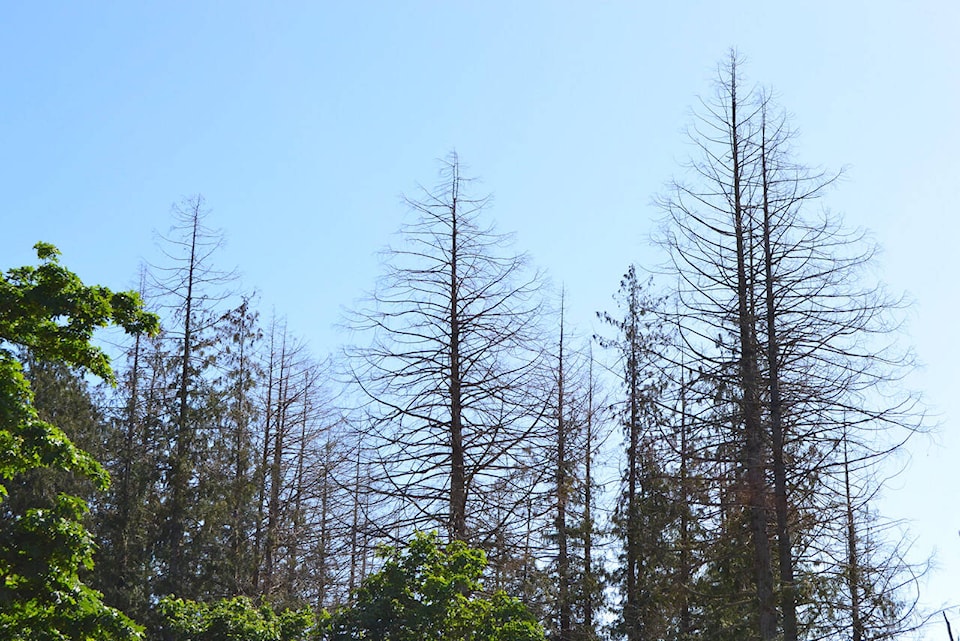Comox Valley Nature is hosting an online lecture by Dr. Joey Hulbert.
The lecture entitled “Western Redcedar Dieback and Community Science in the Pacific Northwest” is on Sunday, Sept. 19, 7–9 p.m.
Given the current guidelines for Covid-19 prevention, Comox Valley Nature has made arrangements to have a live, online webinar for Joey’s presentation. To register, go to https://bit.ly/3tnspDm
Western redcedar is a culturally, ecologically and economically important tree to western North America, but recent increases in dieback have raised concern about its vulnerability to hotter and drier climates. The symptoms of dieback generally include trees with thinning crowns, flagging, yellowing or browning of foliage, dying tops and mortality. Forestry specialists consider that the driver of the dieback is abiotic. Given its extent throughout the region, it is likely linked with recent drought events, but the relationship has not been empirically tested.
Attend this presentation to learn about a community science approach to address the urgent need for information to aid in decisions for climate adaptation.
Joey Hulbert is a postdoctoral fellow in the Ornamental Plant Pathology Program at the Puyallup Research and Extension Center of Washington State University. He is also the program director for Forest Health Watch (https://foresthealth.org/) and an organizer for Washington State University Forest Working Group. His research includes many aspects of plant pathology and the value of citizen science using iNaturalist to contribute to forest health research.
This is an excellent opportunity for the public to learn more about western redcedar dieback.
